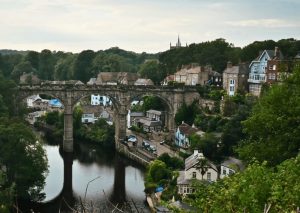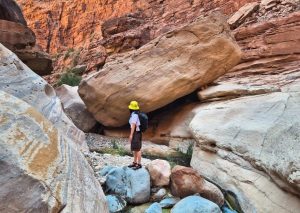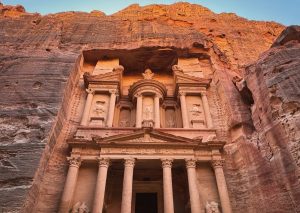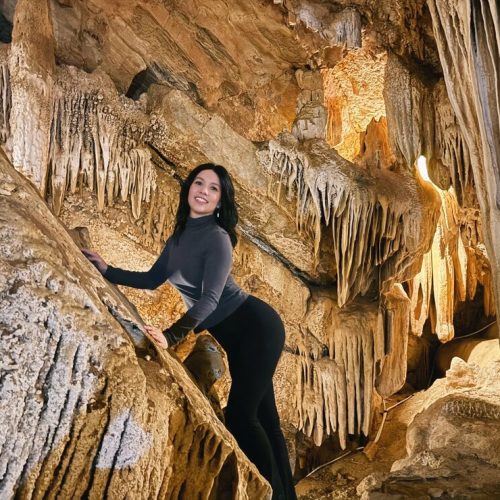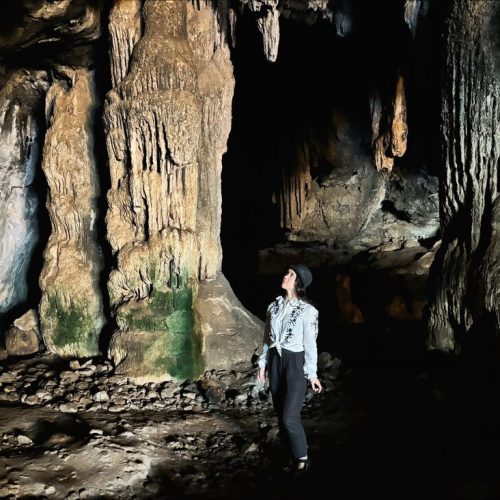
Sandakan is considered the gateway to Borneo’s wildlife, located in the eastern part of Malaysian Borneo. The city and surrounding vicinity offer a remarkable combination of wildlife encounters, historical sites, and tropical rainforest experiences.
About 25 kilometres west of Sandakan, the small town of Sepilok is famous for its efforts to conserve Borneo’s endangered species, including orangutans. For anyone that wants to experience the incredible biodiversity of Sabah, a trip to Sepilok should be included in any itinerary to the region, along with the Kinabatangan River which you can visit on a day-trip from either locations.
Before now you might have only known about Africa’s Big 5, but Boreno has its own too. Along the river you can see animals in the wild, including Borneo’s Big 5: the Pygmy Elephant, the Proboscis Monkey, the Orangutan, the Rhinoceros Hornbill and also the Estuarine Crocodile.
A trip to Sandakan and Sepilok is a must-visit for nature lovers and anyone seeking a deeper connection with Borneo’s natural world. Travellers have the opportunity to encounter some of Borneo’s most iconic wildlife up close, and also learn more about conservation efforts to promote the safety of these animals amidst rapid habitat destruction.

Sandakan: Gateway to Borneo’s History and Wildlife
Arrival in Sandakan
Sandakan, once known as the capital of British North Borneo, is the second largest city in Sabah after Kota Kinabalu. To get to Sandakan most people either drive or fly. I have been to Sandakan twice and used both modes of transport. Depending on traffic, driving takes around 6 hours, and flying a mere 40 minutes.
While Sandakan is often seen as a launching point for the region’s natural attractions, Sandakan itself has a few historical and religious sites to visit before dashing off to Sepilok.
Puu Jih Shih Temple
A visit to Puu Jih Shih Temple offers stunning views of the town and the bay of Sandakan. This Chinese Buddhist temple is perched on a hill and features intricate carvings, statues, and serene gardens.
Agnes Keith House
Perhaps the most famous book ever written about Borneo is the ‘Land Below the Wind’ (1939) by Agnes Keith. Agnes arrived in Sandakan in 1934 with her husband Harry Keith, who was appointed the Conservator of Forests and Director of Agriculture for North Borneo. Her writing captures the beauty of the region, the customs and traditions of its people, and the challenges of living in a remote part of the world.
Agnes and her family’s lives were dramatically altered during World War II, when the Japanese occupied Borneo. Their home was destroyed and a new house was built on the same site, which has since been preserved as the Agnes Keith House, a museum dedicated to her life and writings. Today, her home stands as a tribute to her legacy, allowing visitors to connect with her stories and the history of Sandakan through a deeply personal lens.
Sandaken Memorial Park
Sandakan Memorial Park commemorates the Sandakan Death Marches of World War II, where many Allied prisoners of war lost their lives. The well-maintained park, which sits on the grounds of a former POW camp, is a place for reflection and paying recognition to all lives lost, as well as the suffering and sacrifice of the native population.
Sepilok: A Haven for Orangutans and Wildlife
Sepilok, famous for its efforts to conserve Borneo’s endangered species, is the reason why most people visit this region. If you don’t have time to visit the Kinabatangan River, don’t worry, a trip to Sepilok will guarantee plenty of wildlife encounters.
Sepilok Orangutan Rehabilitation Centre
Opening times: 9am – 11am and 2pm – 4pm. Entry Fee: 30 MYR

The Sepilok Orangutan Rehabilitation Centre is a must-visit. Founded in 1964, it aims to rescue orphaned and injured orangutans, rehabilitating them before releasing them back into the wild.
Sepilok was founded with a clear mission: to rescue young orangutans that have been orphaned or displaced, often due to deforestation, illegal logging, or the palm oil industry. The centre’s goal is to rehabilitate these orangutans, teaching them the necessary skills to survive independently, so they can eventually be released back into the wild.
Feeding times: Visitors can observe the orangutans in a semi-wild environment, especially during feeding times at 10:00 AM and 3:00 PM, when the primates come to feeding platforms for food.
This supplementary feeding is a vital part of their rehabilitation process, helping the semi-wild orangutans transition to foraging for food in the surrounding rainforest. It also offers a chance to see the orangutans’ agile movements, playful behaviour, and interactions with one another. Seeing the babies latch on their mother’s waist as she swung from tree branches or watching them navigate how to move and climb for themselves is really a special sight to witness.
Bornean Sun Bear Conservation Centre
Opening times: 9am – 3.30pm. Entry fee: 30 MYR adults, 15 MYR juniors – 17 and under

Adjacent to the orangutan centre is the Bornean Sun Bear Conservation Centre. It provides sanctuary for Bornean sun bears, the smallest bear species in the world, which are often rescued from the illegal pet trade or poaching.
When I first visited Sepilok in 2007, this place did not exist, and honestly, I didn’t even know that bears existed in Borneo until I began planning my return this year in 2024. The conservation centre opened in 2013 and has been working with various organisations to promote the safety of these sun bears in Borneo ever since.
Visitors can observe these bears from raised boardwalks, learning about their behaviour and the efforts to protect them. The information about the behaviours and conservation are particularly engaging, making it a valuable educational experience for all ages. I learned a lot during my visit.
Fun facts: Comparative to other bears, they are very small, even smaller than pandas! They also have incredibly long tongues that span up to 40cm. This allows them to reach insects and honey from the tree cavities.
Rainforest Discovery Centre (RDC)
Opening times: Daily 8am-5pm. Entry Fee: 20 MYR


Whatever you do, don’t miss a trip inside the Rainforest Discovery Centre (RDC). I think this was my favourite place in Sepilok because it encompasses everything I love: nature, walking, wildlife and relaxing.
The RDC allows you to delve deeper into the region’s rainforest ecosystem. It offers canopy walkways, nature trails, and fantastic educational exhibits that highlight the rich biodiversity of Borneo’s rainforests. If you’re coming with children, it’s an excellent place to spend the day. Exploration is limitless, and the opportunity to see Borneo’s wildlife in its natural environment feels endless.
Best of all, I even spotted orangutans dwelling on the tree tops! I didn’t expect to see them outside of the nearby rehabilitation centre, so it was great to see a few happy and thriving within nature.
Tip: Bring a pair of binoculars to your trip to Borneo.
The centre also offers a 2-hour night walk which you can sign up for on the day, costing MYR30. It departs at 6pm from the ticketing centre. This is a superb opportunity to learn more about the unique creatures indigenous to Borneo such as flying squirrels, tarsiers and slow lorises, amongst many other.
Labuk Bay Proboscis Monkey Sanctuary
Opening times: Daily 8am – 5pm. Entry fee: 60 MYR

Just a 40-minute drive from Sepilok, the Labuk Bay Proboscis Monkey Sanctuary offers a rare chance to see Borneo’s iconic proboscis monkeys. Known for their distinctive long noses and pot-bellied appearance, these special creatures are endemic to Borneo, meaning this is the only place in the world you can see them.
Feeding times: Daily feeding sessions take place at 9:30 AM and 2:30 PM at Platform A, and 11:30 AM and 4:30 PM at Platform B.
Proboscis monkeys are highly animated and their quirky features makes them super fun to watch. You can tell who the alpha males are because they have the biggest noses, and they sit in the centre the feeding platforms hogging a lot of the food. Yep, if you have a big nose, you’re king of the pack.
Note: There are two platforms: A & B. They are located a 5 minutes’ drive apart or approximately 30 minutes walk. I think some visitors only go to platform A, not realising that there are two. Platform B is larger and has a room that provides information about the monkeys and the history of the sanctuary.
This sanctuary is located within an oil palm estate and has an interesting history. In the 1990s, the site was supposed to be cleared for oil palm until the owners found a group of proboscis monkeys living here and opted to preserve a 400-acre site so they could continue living there. The irony of being a plantation owner, while opening a wildlife sanctuary certainly hasn’t been lost on me. Hopefully deforestation will be scaled back in Borneo for future generations to come. There are some NGOs that specialise in reforestation but its a very slow process.
Exploring the Kinabatangan River
A trip to Sandakan and Sepilok wouldn’t be complete without venturing further into Borneo’s wilderness along the Kinabatangan River, about two hours’ drive from Sepilok. This river is one of the best places in Sabah for wildlife spotting.

Time-pressed travellers can visit on a day trip from Sandakan or Sepilok, but if you have time, I would really recommend staying longer. I stayed for 2-nights at Hornbill Lodge and it was one of the highlights of my trip (well, the whole trip to Borneo felt like a highlight to be honest!).
Here, you will embark on river safaris at dawn or dusk to see proboscis monkeys, pygmy elephants, crocodiles, and a variety of bird species, including hornbills. I was lucky to see Borneo’s Big 5. However, I didn’t see them all in one day which is why I recommend an overnight stay as opposed to a day trip. The river’s dense jungle and winding waters offer a sense of adventure, with each boat trip offering a chance to encounter new wildlife.
Read more: Wildlife Encounters on the Kinabatangan River in Borneo
Where to stay
For a more immersive nature experience, I recommend staying near Sepilok in a jungle lodge. On my first trip to Sandaken I stayed at Sepilok Rainforest Resort which I absolutely loved. I wanted to stay there again but it was fully booked, so I stayed at Sepilok B&B which was okay but nothing special apart from it being well situated. Both hotels are within walking the rehabilitation centres and offer a tranquil rainforest setting.
Practical Tips for Visiting
- Getting There: Sandakan is accessible by direct flights from Kota Kinabalu or Kuala Lumpur in mainland Malaysia. Sepilok is a 25-minute drive from Sandakan and can be reached by taxi or arranged transfer.
- Best Time to Visit: The dry season, from March to October, is ideal for visiting Sepilok and taking river safaris, as the drier conditions make it easier to spot wildlife.
- What to Pack: Bring light, breathable clothing suitable for the tropical climate, insect repellent, comfortable walking shoes, and binoculars for better wildlife viewing.



